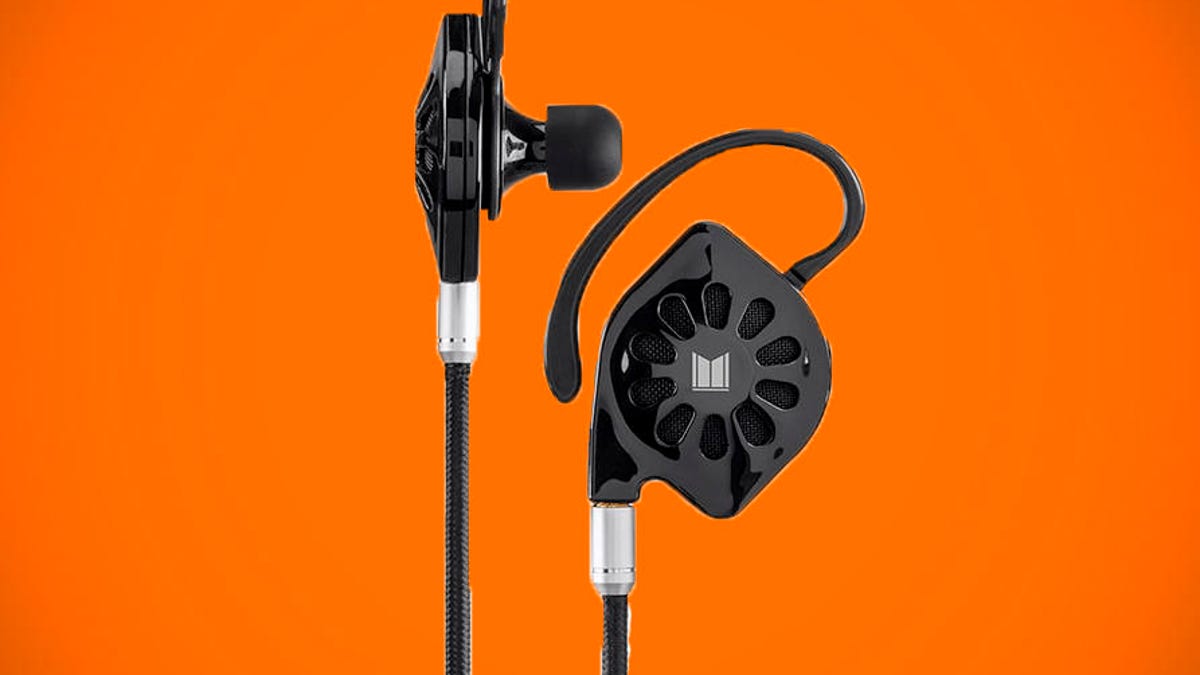Monoprice apes Audeze with high-tech $150 headphone
To the Audiophiliac, Monoprice’s new M300 in-ear headphones seem hauntingly familiar.
The Monoprice Monolith M300 in-ear headphone sounds like almost no other in-ear you've heard. I said almost because the M300 sounds and looks so similar to the Audeze iSine10 in-ear headphones. They both have strong appeal to audiophiles craving highly transparent sound that isn't trapped inside your skull.
The biggest difference? The Monoprice M300 costs $150 while the iSine 10 costs $350.
Even before I heard the M300, I knew it was inspired by Audeze's iSine headphones. Looking at them side by side it's easy to see Monoprice copied a lot of the iSine10's design. They're both open-back planar magnetics with larger drivers than you'd find in most in-ear headphones. Where you'd typically see 8-10mm drivers in your average in-ear, the Monoprice boasts a 28mm planar magnetic driver, while the iSine's planar driver is even bigger at has a 30mm!
The iSine10 and iSine20 were game changers when they were introduced back in 2016. Audeze was the first to release what looks like an on-ear headphone, but one with an extension nozzle that directs the sound into your ear canals, the way in-ear headphones do. But unlike other in-ears Audeze's were "open-back," so they don't isolate the user from the environment. Neither does the M300.
The M300's ear pieces are slightly heavier than the iSine10's (13.5 vs. 11 grams) but that difference makes for a less comfortable fit as the ear pieces are literally hanging off your ears. Part of the comfort differences can also be attributed to the M300's considerably thicker and heavier cables, but the good news is the cables are user-replaceable. The cable's chunky right angle 3.5mm plug feels really solid, and the headphone's impedance is rated at 22 ohms. One other nitpick: The M300's magnets make the ear pieces stick to each other. No other in-ear headphones in my experience ever did that. It's a minor annoyance.
The Audeze iSine10 (left) looks a heck of a lot like the Monoprice Monolith M300.
The M300 sound is clear and clean, and like I said before the sound isn't trapped inside your head. The M300 makes bass, it's deep and nicely defined, but if you're a fan of big fat bass you're not going to find it here.
When I compared one of my favorite in-ear headphones, the $100 1More Triple Driver with the M300, the differences were in line with what I expected. The M300 was more spacious and airy, which I liked, but the bass fullness I heard from the Triple Driver was sorely lacking. Then I popped on the iSine10, and there was slightly more bass than the M300, and the '10's overall clarity was much superior to the other two headphones. The upside for the M300 is it has a richer/warmer tonal balance than the iSine10's.
When I swapped the iSine10's standard cable for its Audeze Lightning cable and plugged into my iPhone 6S, the headphone's bass and midrange quality and quantity much improved. The M300 doesn't have an equivalent cable.
The M300 is exceptional in terms of its spacious soundstage and clarity, but it's not going to please every taste. Its lightweight bass and inability to hush external noise will be deal breakers for a lot of folks.
I'm concerned with Monoprice's obvious copying of Audeze's ISine headphones, and I had second thoughts about even covering the M300. I did because it's out there, and its lower price makes it available to a lot more people than the iSine10.
Still, it's up to each buyer to decide whether they want to support a company that copies -- I'm being polite here -- another brand's designs.


